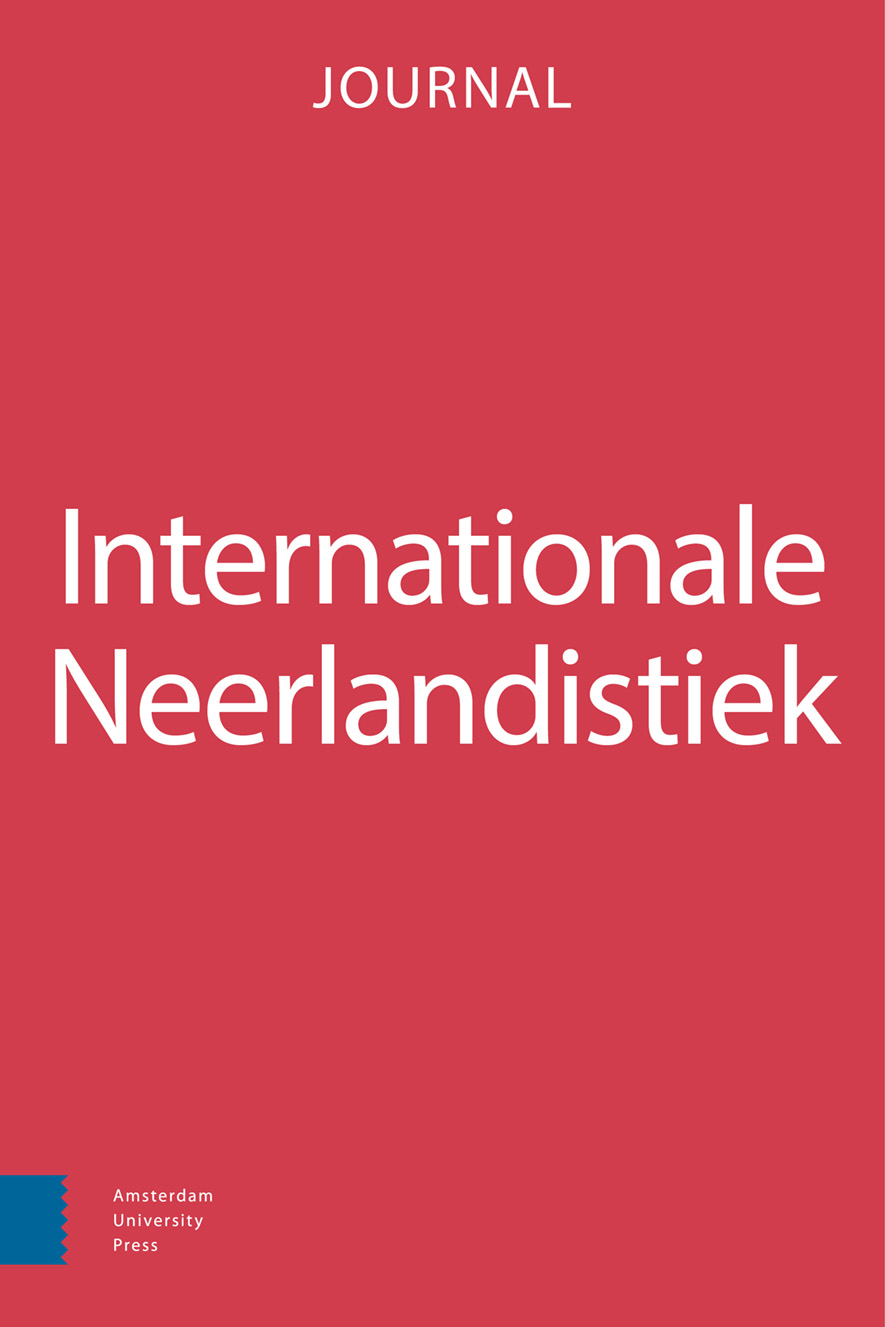- Home
- A-Z Publicaties
- Internationale Neerlandistiek
- Previous Issues
- Volume 59, Issue 3, 2021
Internationale Neerlandistiek - Volume 59, Issue 3, 2021
Volume 59, Issue 3, 2021
Taal:
Engels
-
-
Ik, Vondel (2017) van Hans Croiset als fictieve autobiografie
Meer MinderDoor Marijke Meijer DreesAbstract In this article, I analyze Ik, Vondel (2017) by Hans Croiset. How does the reader of this book become convinced that he/she is reading a fictional autobiography of Vondel? I focused on two aspects that encourage such an autobiographical reading: the narrative strategy and the interplay of referential and fictional elements. The one factor that can captivate readers is the complex way in which the very elderly Vo Read More
-
-
-
De onzichtbare verteller. Over Wees onzichtbaar van Murat Isik
Meer MinderDoor Sandra van VoorstAbstract What is fascinating about Murat Isik's novel Wees onzichtbaar is that so many different groups of people greatly appreciate this book, from the juries of the literary prizes, to the literary-oriented readers in the countless reading clubs in the Netherlands, and from the viewers of the TV programs De leesclub van M. and Koffietijd, to the students and the booksellers. This article examines how the novel brings about that e Read More
-
-
-
Alleen in woorden kan de aarde averechts rillen
Meer MinderDoor Coen PeppelenbosAbstract This article discusses the role of the narrator in Erwin Mortier’s award-winning book Godenslaap. The poetical statements made by the narrator (who is a writer) seem at first sight to be overtly formalistic, but it is precisely this artificial form of fiction that makes it possible to describe the gruesome reality of a war. The criticism in a review that this novel is ‘empty’ does not hold up. Nederlandstalig abstract Dit artikel be Read More
-
-
-
Drempels. Een ruimtelijke analyse van Roxy (2014) van Esther Gerritsen
Meer MinderDoor Janneke WeijermarsAbstract In Esther Gerritsen’s oeuvre, the characters are strongly interwoven with space. This article is about her novel Roxy (2014) and examines how spatial descriptions function in the novel and to what extent they can contribute to its interpretation. The study analyzes binary oppositions, setting, and the use of the threshold motif. Nederlandstalig abstract In het oeuvre van Esther Gerritsen zijn de personages sterk verwev Read More
-
-
-
De wereld als sciencefictionroman. Over De goede zoon van Rob van Essen
Meer MinderDoor Erica van BovenAbstract Rob van Essen’s award-winning novel The good son (2018) offers its readers a puzzling reading experience. It contains a tangle of storylines and seems to lack head or tail. This contribution aims to discover composition and meaning by analyzing various aspects provided by the novel itself: timeline, plot, science fiction, ideas, poetica. This approach provides insight into the rich reservoir of meanings, whereby the Read More
-
-
-
Een oorlogsroman: Jeroen Brouwers, Het hout
Meer MinderDoor Mary KemperinkAbstract From page one, the novel The stick, by the Dutch writer Jeroen Brouwers is breathtaking and intriguing. The story is set not long after the Second World War. The young Franciscan friar Bonaventura lives in a monastery near to the German border. The community of friars there is in the grip of the pedophile friar Mansuetus and thus caught in a web of fear. Many of them, just like Mansuetus himself, sexually abuse the yo Read More
-
-
-
Verschrikking en verwondering. Op zoek naar het sublieme in Vallen is als vliegen van Manon Uphoff
Meer MinderDoor Mathijs SandersAbstract Vallen is als vliegen by Manon Uphoff has been widely praised for the author’s courage to face a traumatic past. Critics also admired the novel’s originality, its enchanting style, glowing imagination and rich intertextuality. This article aims to answer the question as to how this novel engages its readers. Which literary techniques are used to seduce and guide the reader in her or his perception of the story? An analysi Read More
-
Volumes & issues
Most Read This Month
Article
content/journals/18769071
Journal
10
5
false
nl


